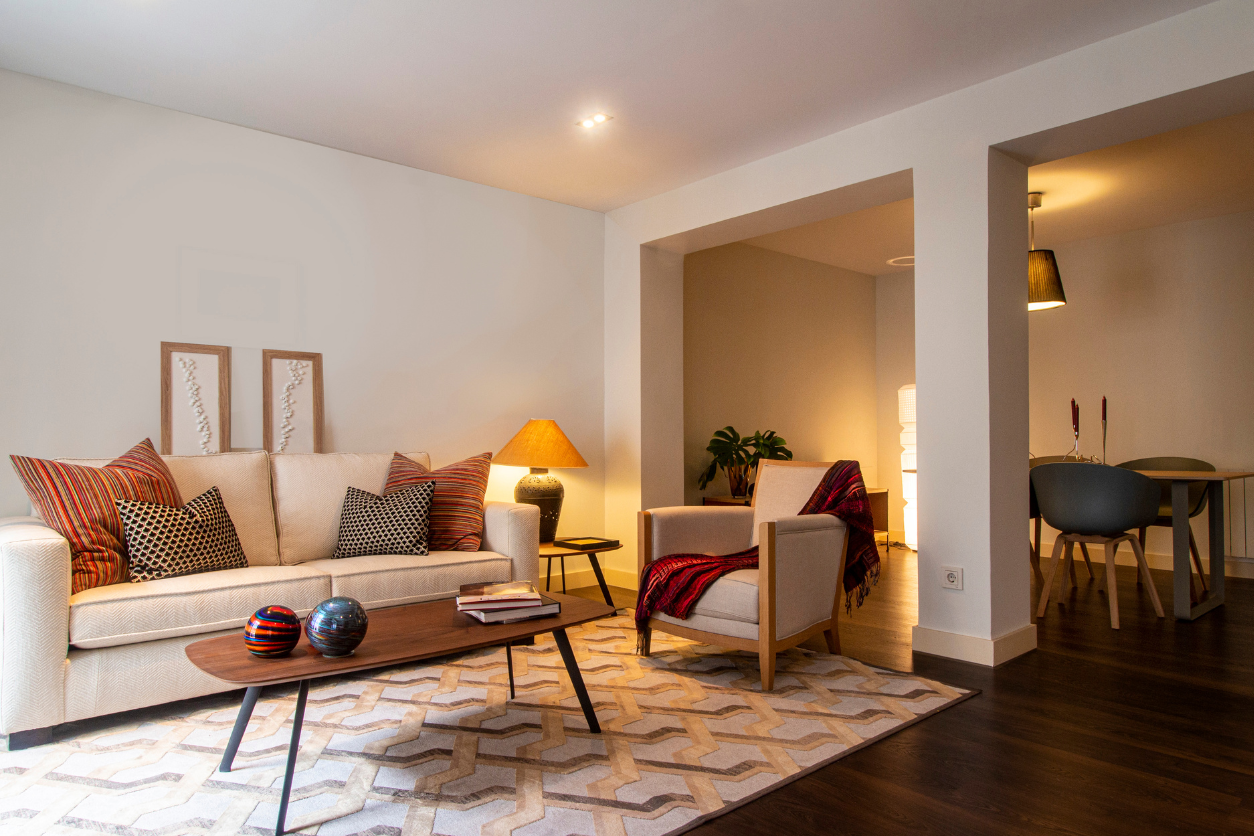Living Room Lighting Ideas for 2024

The right lighting can transform a living room from ordinary to extraordinary. The secret lies in layering light effectively, much like what you see in home decor magazines and TV shows. By using a combination of light sources, from task and ambient to accent lighting, you can create a room that feels cozy yet dramatic. Pairing different types of lighting not only enhances the room’s functionality but also its aesthetic appeal. Think about the warm glow of a table lamp, the focused beam of a floor lamp for reading, and the subtle ambiance created by dimmable overhead lights. With the right lighting strategy, your living room can become a stylish, inviting space for any occasion.
Ambient Lighting
View this post on Instagram
Ambient lighting is your base layer. It’s the main source of light that fills the room, making sure it’s well-lit for general use. Ceiling fixtures, such as chandeliers or pendant lights, are great for this. If you have high ceilings, a statement chandelier can add a touch of elegance, while pendant lights work beautifully over coffee tables or seating areas. Recessed lighting is another fantastic option, especially if you prefer a more minimalist look. These lights are unobtrusive and can be adjusted to highlight different areas of the room.
Task Lighting
View this post on Instagram
Task lighting is all about functionality. Whether you’re reading a book, working on a laptop, or playing a board game with family, you need focused light that reduces eye strain. Floor lamps are perfect next to your favorite reading chair, providing direct light exactly where you need it. Desk lamps and adjustable wall sconces are also excellent choices. I like to keep a stylish desk lamp on my side table for when I need a brighter, more concentrated light for reading or hobbies.
Accent Lighting
View this post on Instagram
Accent lighting is your secret weapon for adding depth and drama to your living room. It highlights specific features like artwork, architectural details, or decorative elements. Think of it as the spotlight that directs attention to the best parts of your room. Picture lights, track lighting, and uplights are great for this purpose. For instance, if you have a beautiful painting or a unique sculpture, use an adjustable spotlight to make it stand out.
Layering Your Lighting
View this post on Instagram
One of the best tips I can offer is to layer your lighting. Instead of relying on a single light source, combine different types of lighting to create a dynamic and inviting atmosphere. Start with your ambient lighting, then add task and accent lights. This way, you can control the mood of the room by simply adjusting the various light sources. For instance, dim the overhead lights and switch on a few table lamps for a cozy, intimate setting, or brighten up everything for a lively gathering.
Dimmers and Smart Lighting
View this post on Instagram
Dimmers are a game-changer. They allow you to adjust the light intensity based on the time of day or the activity you’re doing. Installing dimmer switches for your main lights can create a versatile environment that adapts to your needs. Smart lighting systems take this a step further, letting you control lights through your phone or voice commands. You can set scenes, schedule lights to turn on or off at specific times, and even change the color temperature to suit your mood.
Choosing the Right Bulbs
View this post on Instagram
The type of bulb you use can significantly affect the ambiance of your living room. LEDs are a popular choice because they are energy-efficient and come in a variety of color temperatures. For a warm, cozy feel, opt for bulbs with a color temperature of 2700K to 3000K. If you prefer a more vibrant, daylight-like atmosphere, go for bulbs in the 4000K to 5000K range. Make sure to use the same color temperature for all the lights in a room to maintain a cohesive look.
Integrating Natural Light
View this post on Instagram
Don’t forget about natural light. During the day, maximize the amount of daylight entering your living room. Use sheer curtains that diffuse light gently while providing some privacy. Position mirrors opposite windows to reflect light and make the room appear brighter and larger. When planning your artificial lighting, consider how natural light changes throughout the day and complement it with appropriate fixtures.
Decorative Fixtures
Lighting fixtures themselves can be a form of decor. Choose fixtures that complement your living room’s style and color scheme. For a modern look, sleek metal or geometric designs work well. If you prefer something more traditional, go for fixtures with classic shapes and finishes. Mixing different styles can also create an eclectic and personalized space. Remember, the right fixture can act as a focal point, adding character and charm to your living room.
View this post on Instagram
If your living room has interesting architectural features, like exposed beams, a fireplace, or built-in shelving, use lighting to enhance these elements. Wall-mounted sconces can frame a fireplace beautifully, while LED strip lights can be installed along beams or under shelves to create a subtle glow. This not only highlights the unique aspects of your room but also adds layers and depth to the overall design.
Lastly, consider the practical aspects of your lighting setup. Ensure that light switches are conveniently placed and easy to reach. If you’re using floor or table lamps, manage cords to keep them tidy and out of the way. Think about how each light source will be used and positioned to avoid glare on screens or reflections in mirrors.